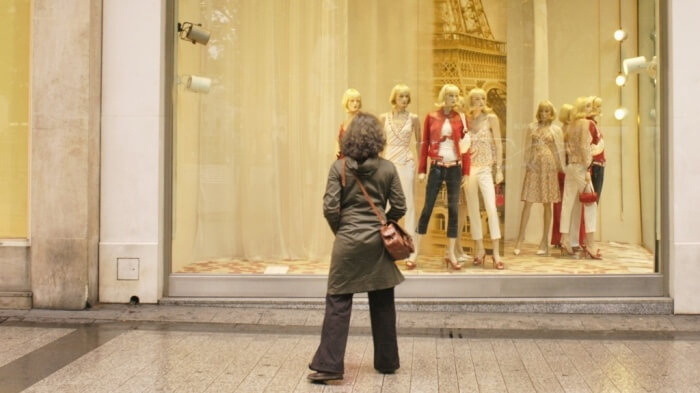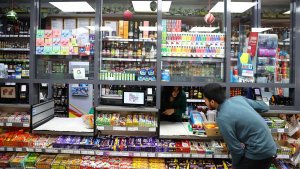Chief innovation officer at Information Builders
View Author ProfilePeer-to-peer recommendations are the best form of marketing but not all retailers can benefit, until now. Here's how mobile commerce, selfies and gamification will put a rocket up your sales this festive season.
Opinions
Why Retail 'Peersuasion' Is Key To A Successful Christmas
Peer-to-peer recommendations are the best form of marketing but not all retailers can benefit, until now. Here's how mobile commerce, selfies and gamification will put a rocket up your sales this festive season.

Mobile marketing technologies are evolving more quickly than ever before. With the festive season fast approaching, many retailers will be focusing on the technologies that allow for the real-time consumer engagement to help them to stand out in this exceptionally competitive landscape.
For example, location-based marketing pushes discounts and coupons to consumers via mobile devices based on the proximity of the consumer to a retail location. Technologies like this will be key to driving revenue at this overcrowded time of year – a recent article in Harvard Business Review titled, “Mobile Discounts: A Matter Of Distance And Time,” reports that correctly timed proximity discounts can increase the odds of a purchase by an eye-popping 76%.
Mobile marketing is effective because it spurs spontaneous purchases. That ultimate combination of right place, right time and, crucially, the right offer helps eliminate deliberation and makes the purchasing decision easy for the consumer. Yet, while it’s easy to make a split-second decision when offered a discount on a movie ticket or a meal at a restaurant, other purchasing decisions cannot be made without some deliberation.
For example, clothing purchases, especially when for a gift, take more deliberation and frequently involve getting advice from close friends. So how can retailers capitalize on mobile marketing and trigger more spontaneous purchases for areas that typically require more deliberation?
My prediction is that the next big category in mobile marketing to emerge will solve this problem. I call it “peersuasion” marketing, i.e. letting the consumer’s peers persuade the decision. Full disclosure: I did not come up with the term “peersuasion”— it was coined by my 15-year-old daughter.
She often tries things at stores, takes selfies and sends them to her friends. Then she’ll walk around while waiting for the advice of her friends before making a decision. Equally, when shopping online or from a catalogue, she’ll want to be able to easily share her possible purchases with her friends to get their opinion.
The more I thought about this, the more I realised that people have always socialized their decisions with their peers, whose advice deeply influences the outcome.
As I watched a man taking a selfie while trying a jacket in a store in New York City, I asked the sales associate to explain to me the behaviour. He replied, “They have to ask their girlfriends or wives. We are tribal creatures; the tribe always decides.” This has never been truer than during the run up to the festive season, where we use the opinions of our peers to help us buy the right gift.
He added that in his view, about 20% of the store’s visitors take and send selfies to get advice. Then he continued to tell me that in his opinion, if a shopper took the time to take a selfie, the odds of buying increase by 50%.
So, while a year ago the store personnel was discouraging people from taking pictures, now they actively encourage people to do so and to share them with their significant others, friends and social networks. Equally, share functions on eCommerce sites have become an essential way of allowing the store message to spread.
If retailers can motivate visitors to use selfies to solicit peer advice, they have a tremendous opportunity to drive double-digit conversions.
"The retailer has created a personal relationship and can curate personalised recommendations in the future"
With social gamification, retailers can provide the incentives for consumers to do exactly that. As an example, a sales associate can offer to take a photo of the customer with the clothing or item in question, and send it to the customer to share it with his or her friends.
With the photo, he also sends the customer a sharable offer with a built-in discount contingent on the customer’s friends’ advice. The same goes for the share function when shopping online.
One way to do this is to increase the discount based on the number of friends that like the item — within limits of course. This little game opens the door for a personal conversation with the sales associate, makes it fun to share, and is a win/win situation for both the consumer and the retailer.
The consumer gets the assurance from his or her peers and a discount, thus making the purchase far more gratifying. The retailer gets an incremental sale especially if the consumer is hesitant. But more importantly, the retailer gets awareness exposure to the friends of the consumer. Even better, the retailer has created a personal relationship with the consumer and can better curate personalised recommendations in the future.
And what if the consumer has “liked” many things but purchased just one? Why not send him or her socially gamified offers for all the items that have been liked? Thus the consumer can be convinced by the opinions of his or her friends and purchase at a later time, giving the retailer even more incremental sales.
While the behaviour of taking selfies is becoming a regular habit for many consumers, getting the right apps and user experience (UX) for peersuasion marketing is key for success. If done correctly, it can break the mould of the brick-and-mortar shopping experience to incorporate the social circles of the consumers, thus making in-store shopping more dynamic, interactive and fun.
Dr Rado Kotorov is chief innovation officer at Information Builders
Most read in Opinions
Trending articles on Opinions
Top articles on Minutehack
Thanks for signing up to Minutehack alerts.
Brilliant editorials heading your way soon.
Okay, Thanks!




